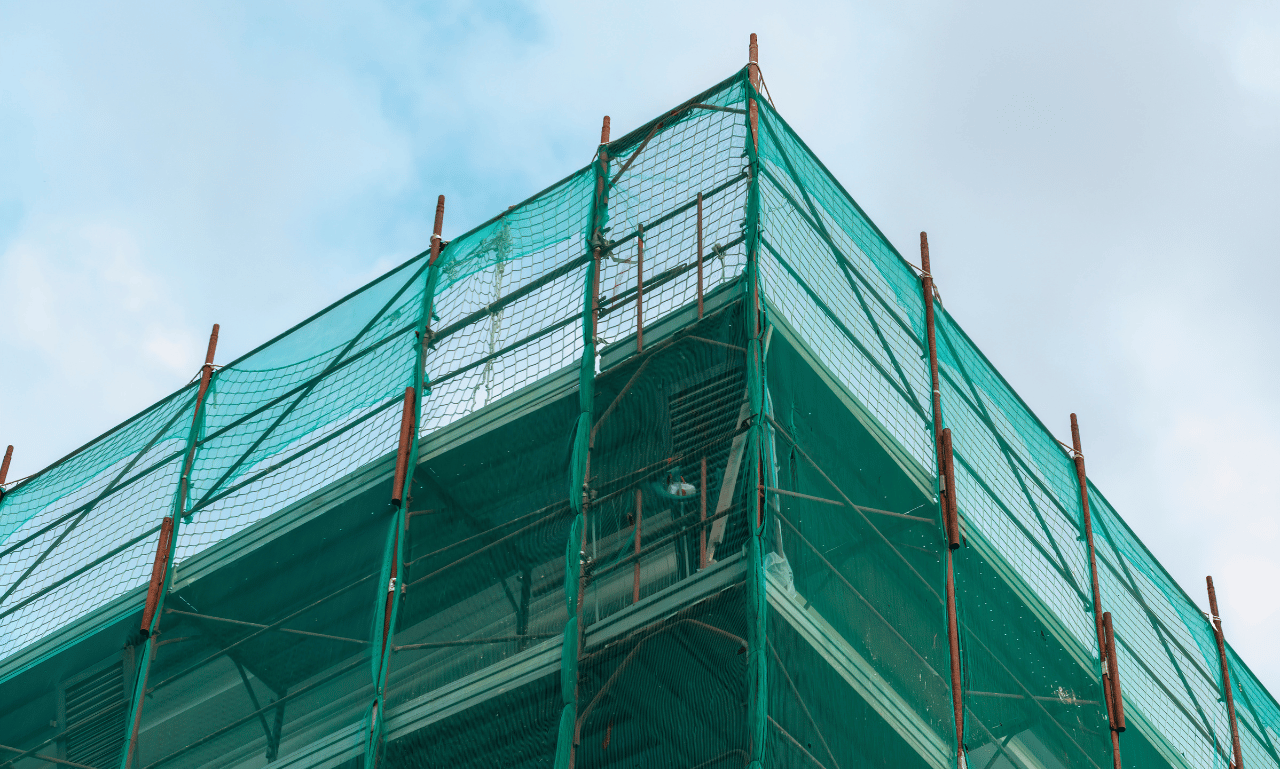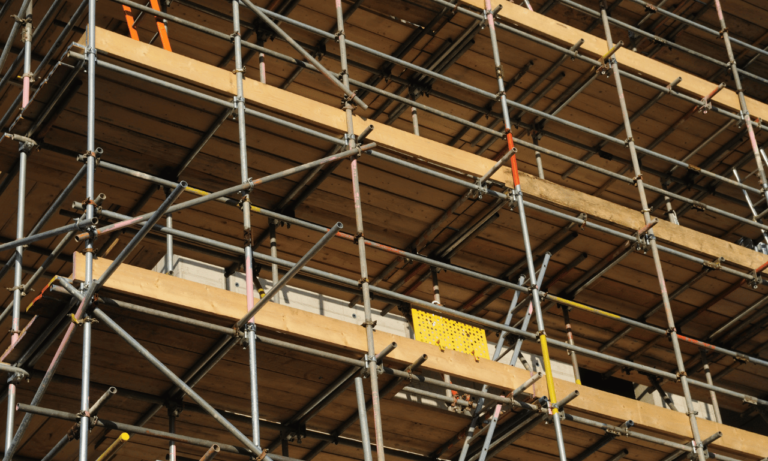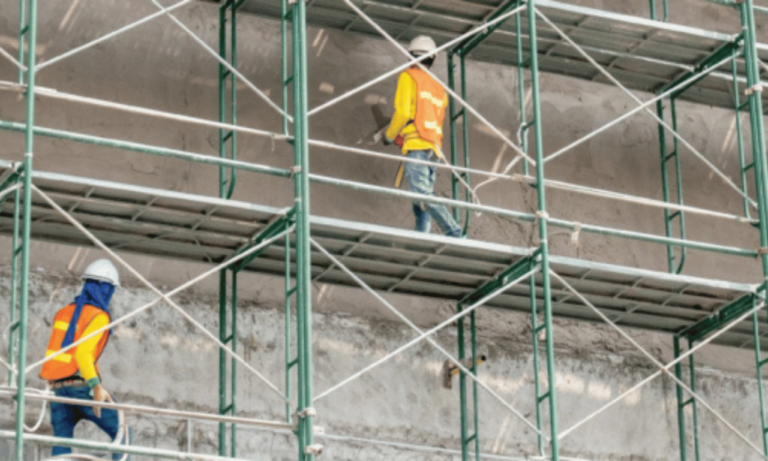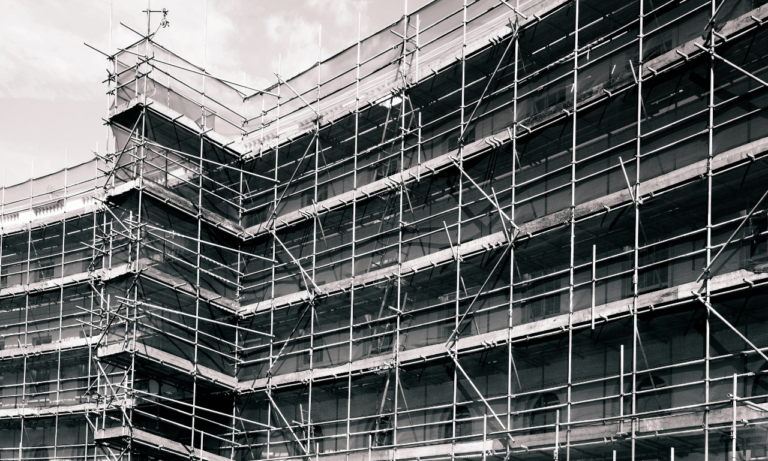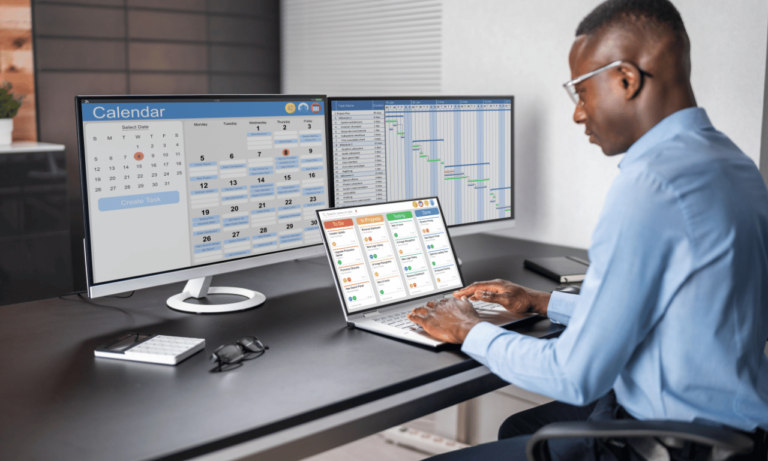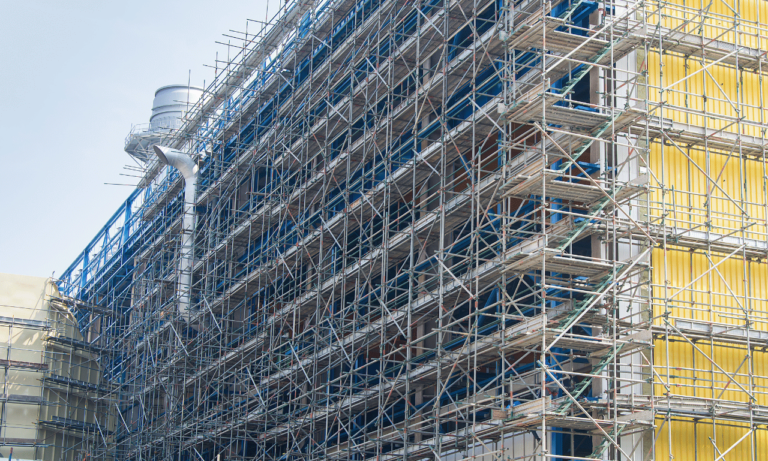Phone:
(+65)8319-0742
Safety is a top concern in construction, especially when working at heights. Edge Protection Scaffolding is crucial for ensuring the safety of workers and preventing accidents and injuries. By implementing the right scaffolding safety solutions and fall protection systems, construction companies can create a secure work environment.
Guardrail systems play a vital role in edge protection scaffolding. These systems provide a physical barrier that acts as a safeguard against falls. Construction safety equipment, such as hard hats and personal protective equipment (PPE), is also essential for protecting workers in case of accidents.
Key Takeaways:
- Edge Protection Scaffolding is crucial for ensuring worker safety in construction.
- Guardrail systems provide a physical barrier to prevent falls.
- Personal protective equipment (PPE) is essential for worker protection.
- Fall protection systems are necessary to mitigate the risk of accidents.
- Construction companies must prioritize safety and invest in the right safety equipment.
Personal Protective Equipment (PPE) for Scaffolding Safety
When working on scaffolds, personal protective equipment (PPE) plays a vital role in ensuring the safety of workers. Various types of PPE are essential to protect against potential hazards and minimize the risk of injuries. Let’s explore the key PPE items that are commonly used in scaffolding safety:
- Hard Hats: Hard hats are crucial in safeguarding workers from head injuries caused by falling objects or impacts. Whether it’s loose tools, debris, or materials, wearing a hard hat provides the necessary protection.
- Non-Slip Footgear: Scaffolding platforms can become slippery, especially in wet or oily conditions. Wearing non-slip footgear ensures workers have a firm grip on the surface and reduces the risk of slips, trips, and falls.
- Fall Arrest Equipment: Fall arrest equipment, such as harnesses, lanyards, and lifelines, is essential for preventing falls from scaffolding. These systems are designed to arrest a fall in progress and minimize the risk of severe injuries.
- Hand-Protecting Gloves: When working with tools and equipment on scaffolds, hand-protecting gloves provide a secure grip, reducing the likelihood of accidents caused by dropped tools. They also offer protection against cuts, abrasions, and chemicals.
- Tool-Tether Lanyards: Tool-tether lanyards are used to secure tools and equipment to workers’ belts or harnesses. By tethering tools, workers minimize the risk of tools falling from heights and endangering those below.
Incorporating these PPE items into scaffolding work enhances safety and operational efficiency. By using hard hats, non-slip footgear, fall arrest equipment, hand-protecting gloves, and tool-tether lanyards, workers can mitigate potential hazards and focus on their tasks with peace of mind.
Load-Bearing Capacities and Compliance with Industry Standards

When it comes to scaffolding, understanding load-bearing capacities and complying with industry standards is crucial for ensuring the safety of workers. Exceeding the design capacity of scaffolding structures can have severe consequences, including potential scaffold failure and serious injuries.
Scaffold components are typically designed with a safety factor to account for varying load requirements. However, it is essential to have a clear understanding of the scaffold’s actual load capacity to prevent accidents and maintain a safe working environment.
Scaffolding regulations are established by the Federal Occupational Safety and Health Administration (OSHA) and can vary based on industry classifications and specific customer site requirements. Adhering to these regulations and industry standards is vital for maintaining a safe work environment and preventing accidents.
Competent Person Inspection and Training
To ensure compliance with scaffolding regulations and industry standards, regular inspections conducted by a Competent Person are essential. A Competent Person is an individual with specific training and experience in identifying potential hazards and ensuring the safety of scaffold structures.
The Competent Person carries out thorough checks to identify any weaknesses or potential risks in the scaffold, such as improper assembly, defects, or overloading. They also ensure that the scaffold is erected and used correctly, following the manufacturer’s instructions and industry best practices.
Additionally, providing proper training to workers regarding scaffold safety is crucial for preventing accidents and reducing the risk of injuries. Training programs should cover topics such as load capacities, proper assembly and dismantling techniques, and safe working practices on scaffolding structures.
By prioritizing load-bearing capacities, compliance with industry standards, and conducting Competent Person inspections, construction companies can create safer working environments and protect workers from unnecessary risks and accidents.
Pre-Installation Inspections and Proper Scaffold Setup

Before setting up scaffolds, it is crucial to conduct thorough pre-installation inspections to ensure structural integrity and the safety of workers. These inspections involve material inspection to identify any defects, damage, or mismatched components that could compromise the stability of the scaffold.
Following the manufacturer’s instructions is vital to ensure proper scaffold setup. This includes following guidelines for bracing, installing the correct fasteners, and meeting anchor requirements to maintain the stability and load-bearing capacity of the scaffold.
The work area safety is also a crucial consideration during scaffold setup. Ideally, the work area should be on level ground. However, accommodations can be made for sloped terrain if necessary. It is important to adhere to safety guidelines when working near power lines to avoid any electrical hazards.
During the scaffold erection and dismantling process, it is essential to have a competent person who can supervise the process to ensure proper installation and overall safety. Regular inspections should also be conducted, both during and after the setup, to identify and address any hazards or defects in the scaffold structure.
The Importance of Pre-Installation Inspections and Proper Scaffold Setup
Conducting pre-installation inspections and following the correct procedures for scaffold setup are crucial for ensuring the safety of workers and maintaining the stability of the structure. By thoroughly inspecting materials, checking for defects, and ensuring proper assembly according to manufacturer’s instructions, the risk of accidents and structural failure can be greatly reduced.
Bracing, fasteners, and anchor requirements play a vital role in maintaining the stability and load-bearing capacity of the scaffold. Following the manufacturer’s guidelines and ensuring the correct installation of these components is essential for worker safety.
Furthermore, the work area where the scaffold is set up should be safe to minimize the risk of accidents and falls. Level ground is preferred, but necessary accommodations can be made for sloped terrain. Adhering to safety guidelines when working near power lines is crucial to prevent electrical hazards.
Having a competent person supervise the scaffold erection and dismantling process ensures that all safety protocols are followed, minimizing the risk of errors or oversights. Regular inspections throughout the scaffolding project can help identify any potential hazards or defects and address them promptly, ensuring ongoing safety and stability.
| Pre-Installation Inspections and Scaffold Setup Checklist |
|---|
| Thoroughly inspect all scaffold materials for defects or damage. |
| Ensure all components are properly matched and compatible. |
| Follow the manufacturer’s instructions for proper scaffold setup. |
| Install bracing according to guidelines to enhance stability. |
| Use appropriate fasteners to securely connect scaffold components. |
| Meet anchor requirements to prevent scaffold movement. |
| Ensure the work area is safe, with level ground preferred. |
| Adhere to safety guidelines when working near power lines. |
| Have a competent person supervise scaffold erection and dismantling. |
| Regularly inspect the scaffold structure for hazards or defects. |
Safe Working Conditions and Weather Considerations

Creating safe working conditions is crucial when working at height. Workers on scaffolds face various hazardous conditions, including **high wind**, **heavy rain**, **lightning**, **snow**, and **ice**. These weather conditions pose significant risks to scaffold safety and the well-being of workers.
During adverse weather, it is important for workers to be aware of these hazards and avoid using scaffolds. This precautionary measure helps mitigate the potential dangers associated with inclement weather. Monitoring weather forecasts and enforcing weather safety rules ensure a hazard-free workplace.
Employers should prioritize the safety of their workforce by providing a **safe working area** and ensuring that scaffolding is not accessed during hazardous weather conditions. This proactive approach protects workers from unnecessary risks and promotes a culture of safety on construction sites.
It is also essential to collaborate with licensed staff and contractors who have undergone education, training, and hands-on experience in scaffolding safety. Working with professionals who have the necessary expertise minimizes the likelihood of accidents and injuries.
Benefits of Working with Licensed Staff and Contractors:
- Enhanced safety measures through proper training and education.
- Adherence to industry regulations and best practices.
- Effective risk assessment and mitigation strategies.
- Proficiency in handling hazardous conditions and weather-related challenges.
- Compliance with safety standards and protocols.
Conclusion
When it comes to working with edge protection scaffolding, safety is paramount. Fall prevention is crucial, and the installation of safety rails and guardrails provides the necessary protection for workers. But it goes beyond that. A safety culture that prioritizes worker well-being not only boosts productivity but also ensures compliance with regulations.
Following best practices for scaffold guardrail installation is key. This includes conducting risk assessments, ensuring proper alignment and attachment of guardrails, and maintaining a sufficient height for optimal protection. Regular maintenance and inspections are also essential to identify any potential issues and take corrective actions promptly.
In addition to proper installation and maintenance, a well-trained workforce is vital. Workers should receive thorough training and understand the importance of scaffold safety. Clear communication and coordination among workers further enhance safety measures on construction sites.
Temporary and roof edge protection products play a significant role in ensuring safety during construction projects. Guardrail systems, toeboards, scaffold netting, and barriers are some of the edge protection products that can be utilized to prevent falls and create a secure working environment.
By adhering to these guidelines and utilizing the appropriate safety equipment, construction sites can become safer and more secure for workers. Prioritizing worker well-being, maintaining compliance with regulations, and implementing best practices contribute to a culture of safety in the construction industry.
FAQ
Why is safety important when working with edge protection scaffolding?
Safety is crucial when working with edge protection scaffolding because it helps prevent falls and injuries. Fall prevention systems such as safety rails and guardrails provide the necessary protection for workers.
What are the key components of personal protective equipment (PPE) for scaffolding safety?
Personal protective equipment for scaffolding safety includes hard hats to protect against falling objects, non-slip footgear to ensure stability on platforms, and fall arrest equipment to prevent workers from falling. Hand-protecting gloves improve tool grip, and tool-tether lanyards securely attach tools to workers.
Why is it important to adhere to load-bearing capacities and industry standards when using scaffolding?
Adhering to load-bearing capacities and industry standards is vital to prevent serious injuries and scaffold failure. Scaffolding structures have specific load limits, and exceeding these limits can compromise worker safety. Compliance with regulations and industry standards ensures the safety of workers.
What should be considered during pre-installation inspections and scaffold setup?
Pre-installation inspections are essential to check the integrity of scaffold materials and identify any defects or damage. Following the manufacturer’s instructions for scaffold setup, including bracing, fastener, and anchor requirements, ensures proper installation. The work area should be safe, with level ground preferred and accommodations made for sloped terrain. It is important to ensure worker safety during the erection and dismantling process by having a competent person supervise the operation.
How do weather conditions affect scaffold safety?
Weather conditions, such as high wind, heavy rain, lightning, snow, and ice, pose significant risks to scaffold safety. Workers should be aware of these hazards and avoid using scaffolds during adverse weather. Monitoring weather forecasts and enforcing weather safety rules help maintain a hazard-free workplace.
What are some temporary and roof edge protection products available for construction projects?
Temporary and roof edge protection products include guardrail systems, toeboards, scaffold netting, and barriers. These products provide additional safety measures to protect workers during construction projects.

